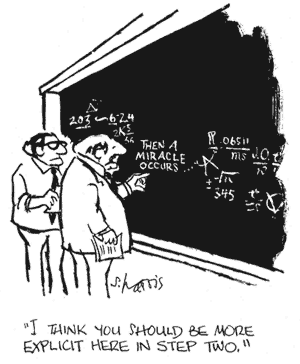As a marketing and communications professional, I stress simple, straightforward language in my work, andI’m always watching for the evolving lexicon of the market. Two words that have been showing up all over the blogosphere, Web and in print like they’re on sale are authenticity and authority. After reading scores of bogs and articles featuring one or both words, it struck me there were two schools of thought among web experts, bloggers and marketers about which was more important, or which begat the other.
Time Magazine recently named Synthetic Authenticity as one of its “Ten Ideas That Are Changing the World”. Authenticity: What Consumers Really Want is the latest book by authors and societal change observers Jim Gilmore and Joe Pine documenting what they see as a shift by businesses and consumers to an Experience Economy. Carter McNamara of Authentic Consulting, LLC took a more philosophical view of the idea in his article Authenticity, “…it’s important for people in management to live and work as authentically as possible…”
Authority shows up a lot as search engine authority, link authority or web authority. But I wanted to explore the larger idea of authority on the Web as a function of influence, credibility, knowledge and/or reputation…who has it, how do you get it, how do you know when you have it. Social media strategist and prolific blogger Chris Brogan had a take on it last year in his post, “How Does the Web Define Authority.”
Rather than sort out it out myself, I decided to pit the two words/ideas against each other in a kind of mashup and ask some of the leading voices (nee “authorities”?) that I follow for their opinions on which of the ideas and actions embodied by each word is of greater importance, if forced to prioritize.
Seth Godin, author of ten international bestsellers including Tribes, and the most popular business blogger in the world.
“If it’s a word game, then authority wins, because authority is about the perception of the consumer. If they believe you an authority, you are. In the long run, of course, authenticity will trump it, because your authority fades without it. The converse is not true. And yes, it’s a word game.”
David Meerman Scott, bestselling author of the New Rules of Marketing & PR
I remember in college there was a professor who had tons of authority. He was tenured, had written books, and was the head of the department. Although he had authority, he was not a popular teacher and his classes were empty. I recall other teachers who were young and dynamic and had no authority. Barely older than the students, they had an authentic love of their subject and of teaching. Their classes were packed. In the always on, one-click-away world of the Web, authenticity wins every time because unlike a college class, people can immediately leave the sites that don’t capture their interest. That’s why a lone blogger can be more popular than a stuffy old trade journal both on the same subject.
Brian Solis, PR 2.0, author of the recently-released book, Putting the Public Back in Public Relations.
“How are you doing?”
“I’m fine. How are you?”
“I’m fine. Thank you for asking.”
What started out as an authentic gesture to understand how someone was feeling eventually dissipated into an almost meaningless exchange to ease into a conversation or simply acknowledge someone’s presence. Authenticity is the minimum requirement in any exchange, online and in the real world. Authority however, is earned with every exchange where those involved are enlightened as a result of their participation.
Relevant information, consistency, and insight are the attributes of those who build credibility among their peers. The transparency that facilitates genuine and sincere interaction helps us build meaningful relationships with those who value each other’s contribution. It’s how we earn trust, loyalty and establish significance. Perhaps what we learn is that it’s not a case of authenticity vs. authority, but authenticity + wisdom + engagement = authority.
Chris Brogan, President of New Marketing Labs, a social media agency that helps businesses understand business strategy around online communication tools.
Authenticity and Authority in the Age of Trust
From around 1950 until maybe as late as 2006, organizations have been able to get away with mass communication and one-sided blurting. No longer. We are ALL the media. We all have networks. We all have cameras and video and newspapers at our disposal. We have the memory of Google on our side. How do companies succeed in this environment? They do what probably should have always been done: be human. It’s not a vast reworking. It’s not throwing out all that’s come before. It’s doing what we know in our guts to be right. How do you build authority? By being human. Be fallible. Be apologetic. And communicate in both directions. Listen, and build trust by responding and interacting. You’re still the leader, but you’re now a responsible leader who cares about your constituency. Try it. You’ll like it.
Mike Volpe, VP of Inbound Marketing at HubSpot which sells inbound marketing software for small and medium sized businesses to generate more leads.
I think authority and authenticity are related but different. Authority is a measure of importance, impact or influence. You can measure authority by your ranking in Google and tools like Twitter Grader or Facebook Grader. Marketers should work to improve their authority in their market – today’s marketing goal is to turn your own web presence (website, blog, Facebook, LinkedIn, Twitter, etc.) to the leading authoritative source for your market. The overall numbers don’t matter as much as the relative authority of your company vs. your competitors’ authority.
Authenticity is a measure of openness and lack of “marketing speak”. One way to measure authenticity is to run some of your content through Gobbledygook Grader and see how much corporate-speak you use. As the web has moved our society to more of a two way communication and given everyone more control over content, outbound marketing and advertising has become less effective. Marketers are embracing inbound marketing, which is more interactive and authentic by nature. I think most people will find that it is hard to achive a high level of authority without being authentic. However, being really authentic does not get you much without authority.
Marketers need to be authentic, but the primary focus for marketing should be on building authority. Authority is a marketing asset – you can use it to drive more people to your events, content, thought leadership, and products. Authority is far more important to driving leads and sales, which is what we marketers should care about most. Building an authoritative presence on the web is part of inbound marketing. You can use your blog, website and social media presence to attract more customers to you, and this effect is stronger as your authority grows.
What are your thoughts about Authenticity vs. Authority? What are your reactions to the positions by Godin, Scott, Solis, Brogan and Volpe? Your comments are invited.
UPDATE: Check the links below for further commentary on this post by Scott, Solis and Volpe on their blogs and HupSpotTV:
———————————————————————————————–
For growing vocabulary, I recommend these sites: FreeRice.com, UrbanDictionary.com, InvestorWords.com, BusinessDictionary.com, Merriam-Webster Online]
Final point. For more information about me, please check out the tabs “About me and this blog” and “4 Reasons to Hire Me” at the top of the page. I am looking for a Chief Marketing Officer or Vice President of Marketing position with a startup or early-stage company, or a higher education institution.



